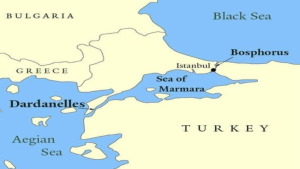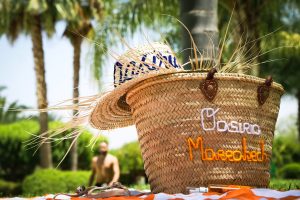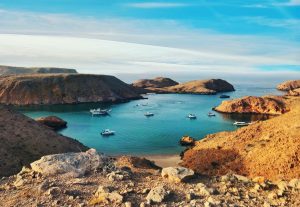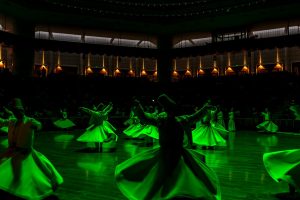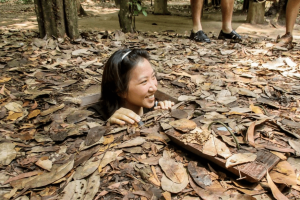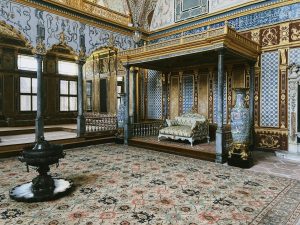
Topkapi Palace: An Inside Look at Ottoman Luxury and Power in Turkey
Topkapi Palace is a cultural inheritance and one of theworld’s largest surviving Palaces. This magnificent Palace was constructed during the late 1460s. The name Topkapi stands fo” “Cannon Ga”e” in Turkish, which refers to the gigantic and robust entrance. The design and architecture of the Palace appear to be unique because of its mix of rulers, including Islamic, European, and Ottoman. Ottoman Sultan Mehmed II conquered Constantinople and wished to have administrative and educational headquarters in the beautiful city. The new Palace was raised under his orders and served as the home of the Ottoman Sultans for almost four hundred years. For many years, everyone called it the”New Royal Palac”.” This Palace contains around 400 lavish rooms and can hold 4,000 to 5,000 people. After the Ottoman reign, this Palace remained unoccupied. In 1924, the Republic of Turkey decided to turn the Palace into the World’s best pioneer Museum. The opulent pavilions, jewel-filled secret treasury, fountains and fantasies of the Topkapi Palace are now open to Public visitors. This Palace is the most visited destination in Turkey. The Courtyard The Palace contains four sections or courtyards surrounded by walls of great height. Each courtyard remains incrementally restricted. Every layer has its Protocols. These are the measures for the Sultan’s security and safety. First Courtyard This first section is the Outer Palace. This section consists of buildings for service and security guard posts. It is the largest of all courtyards. During the Sultan’s reign, the public could visit these courtyards. Second Courtyard This section is also known as Divan Square or State Council. This section served as the administrative centre. Only official visitors and the members of the court can visit this courtyard. This section also has a storeroom for all kitchen utensils and war weapons. Third Courtyard The Palace School is the third and innermost section. This is more private to only Sultans, members of the family and the servants. This courtyard contains dorms for the servants. Precious and rare portraits of Sultans are there in this section. This section had the locker room for all priceless Jewels, diamonds and many more. This section contains the Worldclass Library of Sultan Ahmed III. Fourth Courtyard This section includes Harem. It was the living quarters of the Sultans. This section comprises a lot of lush green pavilions and picturesque gardens. Generally, this courtyard appears to be a Maze structure. Gulhane Park The palace’s layout includes Gulhane Park, which is located on the western and southern part of the Palace grounds. This park is home to several structures, such as the summer Palaces, kiosks, and pavilions. This park contains many kiosks like Yerevan, Iftar, Baghdad, Terrace and Grand. Out of all those Kiosks, the Basketmakers’ Kiosk, constructed in 1592, is the only one open to the public. Audience Chamber It is one of the most elegant and the largest rooms in the Palace. The Turkish and Western fusion interior design is the key highlight of this chamber. During the Sultan’s reign, this chamber space served as a venue for meeting ambassadors from different countries and empires, military leaders, governors of various governments, and other notable people Worldwide. Presently, all Courtyards and the entire Palace are attached to the Directorate of National Palaces Administration, which is maintained by Turkey’s Ministry of Culture and Tourism Affairs. Palace Timelines In the year 1453, Sultan Mehmed II conquered Constantinople. The Palace construction was completed in the year 1465. During 1509, one of the substantial renovations and expansions took place. Around 1665, an unexpected fire accident damaged and destroyed such a massive Palace. The royal residence and the Ottoman Empire’s tenure in the Palace came to an end in the year 1853. Post this year, such a picturesque Palace became the residence of ranked officers. In 1924, the Republic of Turkey converted the elegant Topkapi Palace into a museum. In 1985, UNESCO recognized this venue as one of the heritage sites. Palace Collections The Palace contains beautiful treasures within itself. Palace Treasury This treasury contains precious Artwork and miniatures, Jewellery, a Topkapi Dagger, a Spoonmaker’s Diamond (86 karat diamond), Prophet Mohamed’s cloak, European porcelain, and Luxury glasses from the best glass-making industry. Armoury The armory contains weapons from the 7th century, such as Osman swords, Persian armour suits, and helmets. Palace Library This Palace library possesses more than 20000 manuscripts. The library contains the rarest books of History, multiple copies of the Quran and many more. Visiting Hours Topkapi Palace is in the ancient Istanbul region. The Museum attracts approximately 3 million visitors every year. The Palace is open on all days except Tuesday, from 09.00 in the morning till 05.00 in the evening for the public to visit. There are two ways to book a ticket. Online [E-Ticketing] The Palace remains packed throughout the year. Almost 3 Million visitors visit this destination every year. E-tickets are available for booking to skip the long offline queue line. Booking of this “Skip the line” online ticket offers an additional option to reschedule or cancel the booking. We can also book the “Skip the line guided group tour” option, which helps travellers and visitors to visit every area in a group and listen to the expert’s explanations and audio guides in their comfortable and understandable language. Only a guided group tour ticket takes you inside the Harem. General tickets do not include this option. Offline [By visiting the Museum directly] Visitors can go to the Palace and buy their entry tickets offline at any time. However, the waiting time depends on the crowd on that particular day. On average, during crowded days, it may take up to 4 hours to get the entrance ticket. We are here to help you book the best slot to visit this beautiful place at a competitive price. Children aged seven years and below enjoy reduced or discounted pricing when accompanied by an adult with a valid photo ID. Visitors Tips Here are a few tips from Thrillark for all the visitors. Best time



